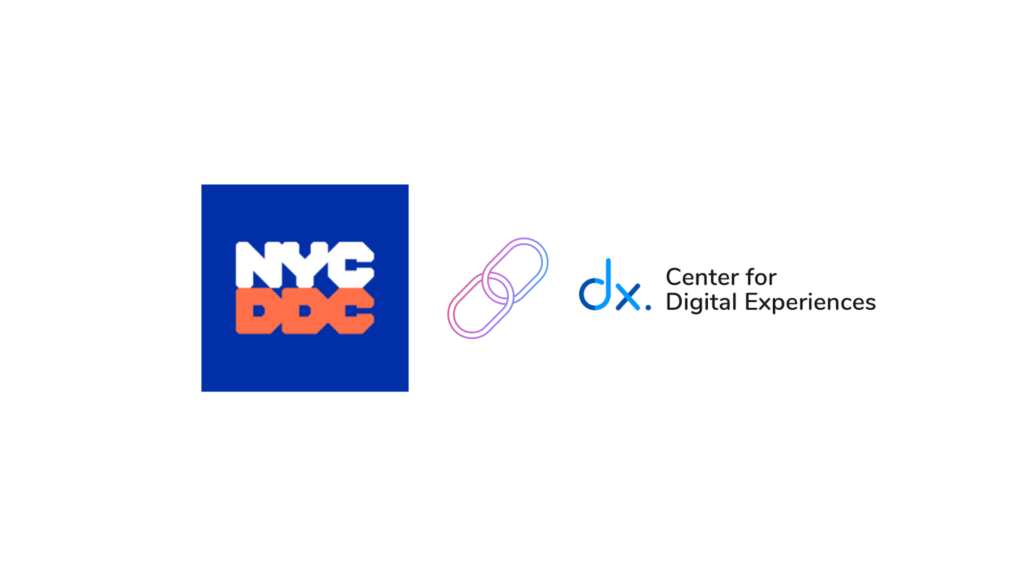
- Background
- Team (2 teams)
- Methods (Observation, Interview, Dairy Study, Workshop)
- Findings
- Recommendations
- Conclusion and Next Steps
Background
NYC DDC (the Department of Design and Construction), is the city’s primary capital construction project manager, builds many of the civic facilities New Yorkers use every day. They also offer communities with new or renovated structures such as firehouses, libraries, police precincts, courthouses, senior centers and more across five boroughs. Nearly everyone in NYC is impacted by the constructions as there are complete or partial road and sidewalk closures that impede mobility and impose direct and social costs.
The client NYC DDC wanted to explore how to provide up-to-date information about the city’s ongoing subsurface construction projects to NYC residents and visitors. Keeping the client’s mission statement in our mind, we used multiple methods to investigate this challenge, and provide recommendations in transparency, vision, and Language & Accessibility perspectives.
Team
Team for interview and observational field work: Sharon Tao, Eva Chen, Krystal Ebron
My Role: Conducted observational fieldwork on the construction site, Interviewed people working in the buildings near the construction site, designed the infographic to summarize the studies.
Team for dairy study and workshop: Tanisha Razdan, Jessica Drozd
My Role: Designed one of the tasks for daily study and analyzed the results. Co-designed the workshop.
Observational Fieldwork (Sept 12-Sept 22):
We observed people who interacted with the construction site (Front Street), including people working in the buildings around the construction site, taxi drivers, tourists living in the hotels in this area and residents. And collected our data through pictures, videos and some notes I took while observing. The purpose of this study was to provide insights into the Front Street construction site community life and practices and help us tap into and better understand interactions among participants.
The findings we got from this study were people choose to live with, interact with or ignore the construction site, their activities were somehow affected but in an okay level Depends on whether the construction is going on, the vibes can be really different, the business were partially blocked by the construction which affected the business owners and workers.
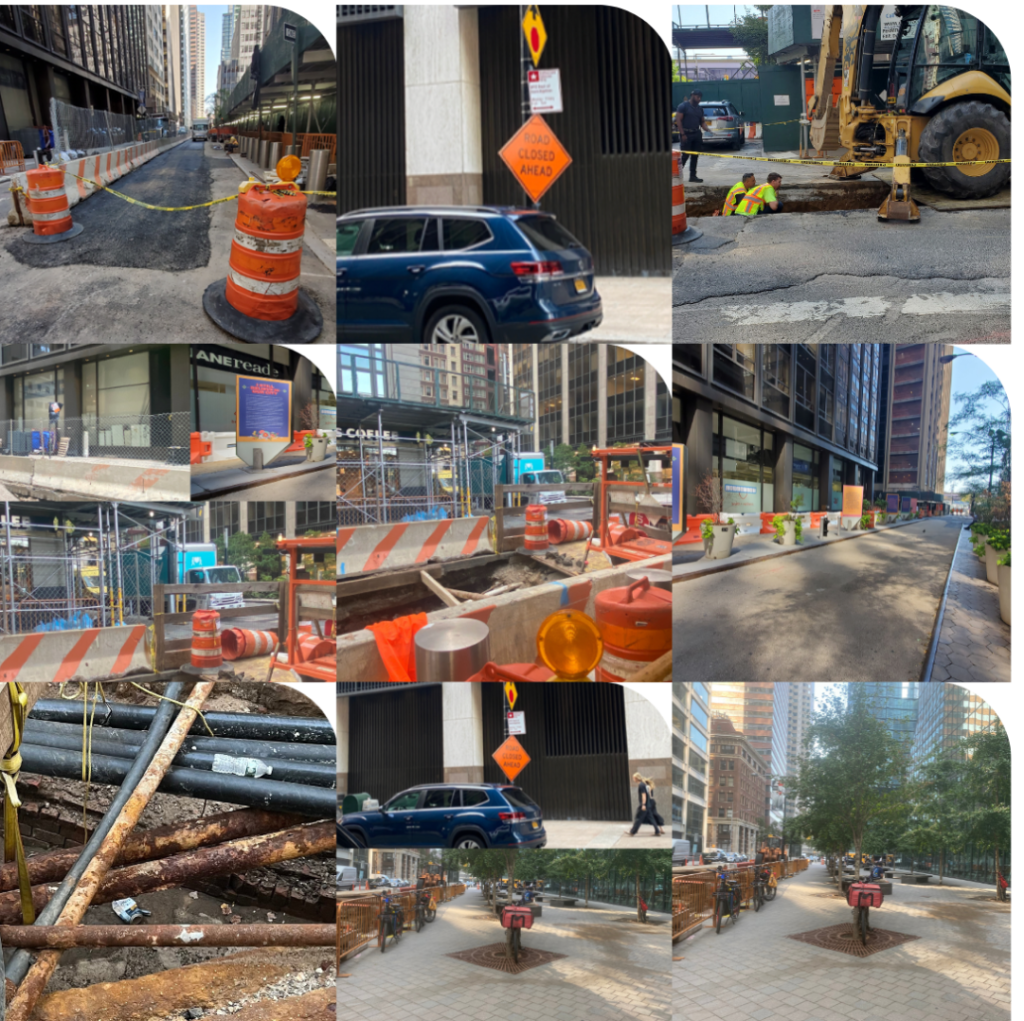
Interviews (September 23- October 1st):
For our interviews, our group each interviewed 3 people on the site so 12 people in total. They are taxi drivers, business owners, residents, tourists, etc,. We walked around the Front street construction and asked if we could interview people. The purpose of this study was to understand how people think and feel about street construction in NYC, Get to know users and users needs. Gaining insights into user behavior and user experience.
The findings we got from this study were people were confused about the purpose and schedule of the construction site and the length of the construction site. They were also annoyed by the noise and changed their route, they worried about there was no visual clue about walking navigation Business be blocked by the construction site, but there were also some people they did not care because they think things need to be done to make the city functional.
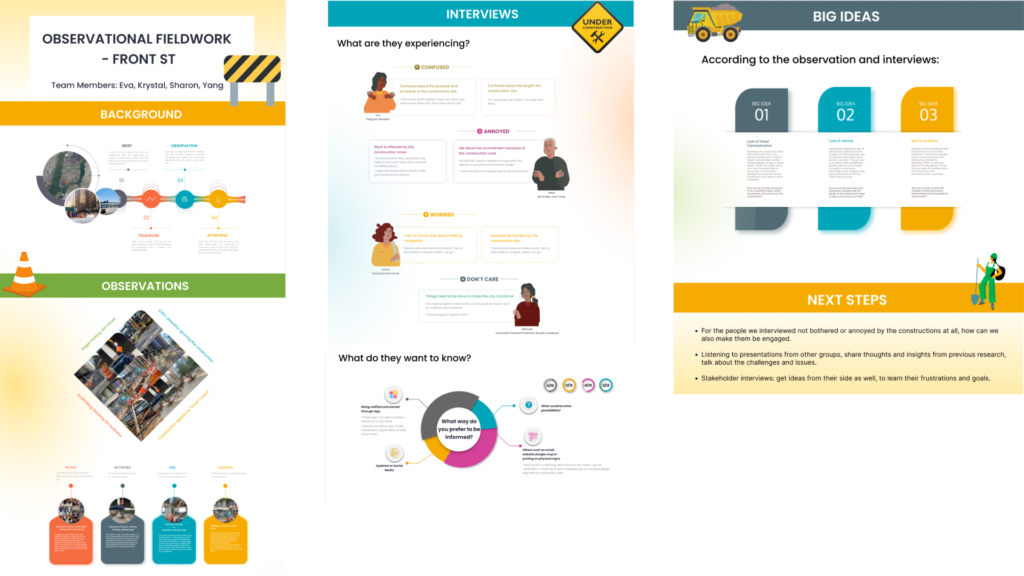
Diary study (October 31st-Nov 6th)
For our diary studies, we conducted the studies with 3 people in total. This included a wealth manager, a graduate student, we had the participants each do three activities which included creating a mood board of their feelings regarding construction. Using any images, videos, quotes to document the issues with construction sites around you and asking how they would improve it if they had a magic wand. The last activity prompted participants to imagine they are taking a time machine which will drop you off in 2025, and the construction is already finished at that time. Please take a look at the pictures below, and select the pictures from the right that represent the changes you would like to see in the future, and use 1-2 sentences to explain why those changes are important to you. Feel free to use additional pictures from Google. We used a collaborative tool called Miro to make it easier for everyone and allowed people to do the study on their own time and place. We also provide an instruction video teaching people how to use Miro. The purpose of this study is to learn more about how people think and feel about street construction in NYC. The input will help us in providing recommendations about street construction in NYC.
The findings from this study were, people living nearby the construction were annoyed by the noise starting early in the morning and the polluted air. People want to see the result when the construction is completed.
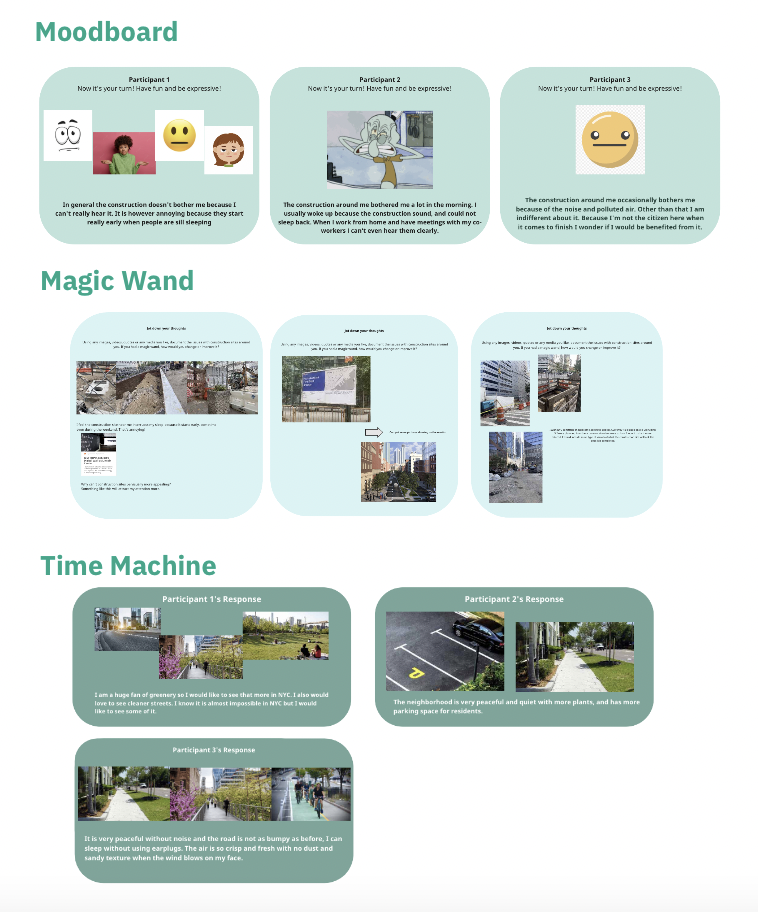
Workshop (Nov 21st Dec 5th)
For the workshop we played a brainstorming game called 6-8-5, the game is designed to combat this pattern by forcing us to generate lots of ideas in a short period of time. The activity can then be repeated to hone & flesh out a few of the best ideas. We wanted to understand participant feelings, how participants want to fix the problem, take participant feelings and thoughts and turn them into solutions. The activity is for our participants who have some sort of interaction and relation with the construction site. From our previous research we did establish how people were feeling and was expecting to feel. Once we link the two feelings we come up with plausible solutions or ways in which those feelings can be resolved. Once we know from our participants about their perspective, we can turn them into insights for us. We asked the participants to brainstorm two questions. One was what does convenience and community engagement mean to you and how do you resolve your feelings of frustration and anger?
The findings we got from this study were, people wanted to be informed about the decisions their communities were making and get engaged as much as possible. They would like to share their thoughts on social media to express their feelings.
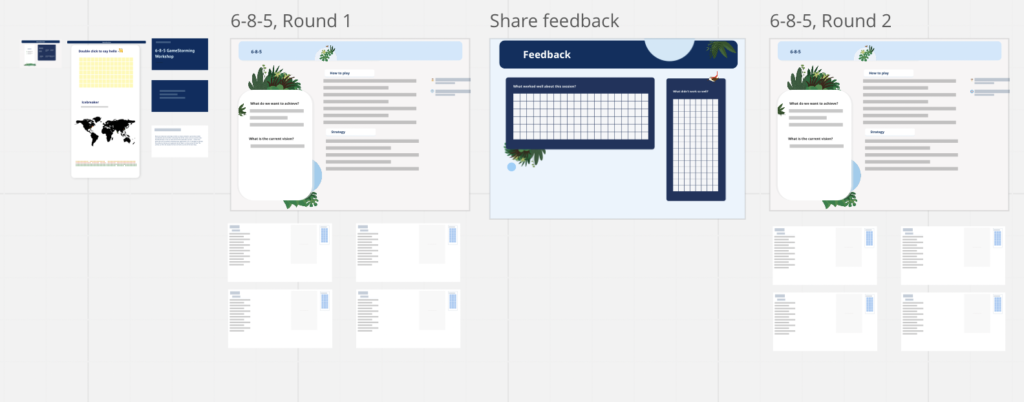
Findings
- Residents of NYC want to be sure that their tax money is going towards bettering NYC. Being transparent about where the money goes in turn makes people feel better about the construction happening in NYC.
- Residents of NYC want to see the results of the construction project, so they can be more supportive and positive about the construction.
- Residents of NYC want to know about construction but may not necessarily speak english.
Recommendations
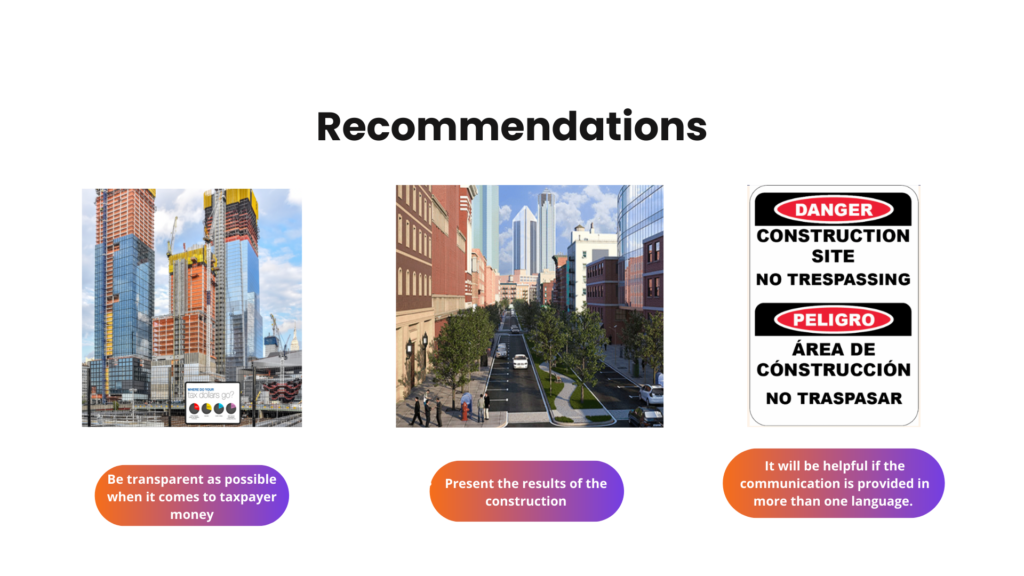
- Be transparent as possible when it comes to taxpayer money.
- Graph showing money spent on completed projects.
- Interactive visual about the impact of people’s tax dollars
- Present the results of the construction
- Digital products include the some pictures showing what will look like when the construction is completed
- Or presenting the results by text, such as more parking space, wider sidewalk, etc. Maybe include this information in a digital product.
- It will be helpful if the communication is provided in more than one language.
- Since New York is a city which attracts a lot of diverse crowds. It is a known fact that a lot of people working, living and residing here speak more than one language.
Conclusion and Next Steps
Conclusion:
We consolidated our big ideas and recommendations from our research which included observational field work, interviews and diary study. We can conclude that few of the issues that are faced by people of NYC are:
- Transparency: How is our tax money being utilized , spent and benefiting us.
- Vision: How will the city look like once the construction is completed
- Language & Accessibility: How can we communicate with the diversity of New York City if my first language is not english.
This can be achieved by:
- Communicating and achieving transparency
- Sharing the vision of the improved site
- Being able to make information accessible to all
Next Steps:
“People don’t buy what you do, they buy why you do it.”
-Simon Sinek, author and leader, describes “the golden circle” to be the effective and most successful organisations think, act and communicate if they start with why.
We believe we have covered the importance of why and how through our research and would implement the what based on the research results. We hope that students in the Digital Product Design class are able to implement the results into a suitable product or a solution.